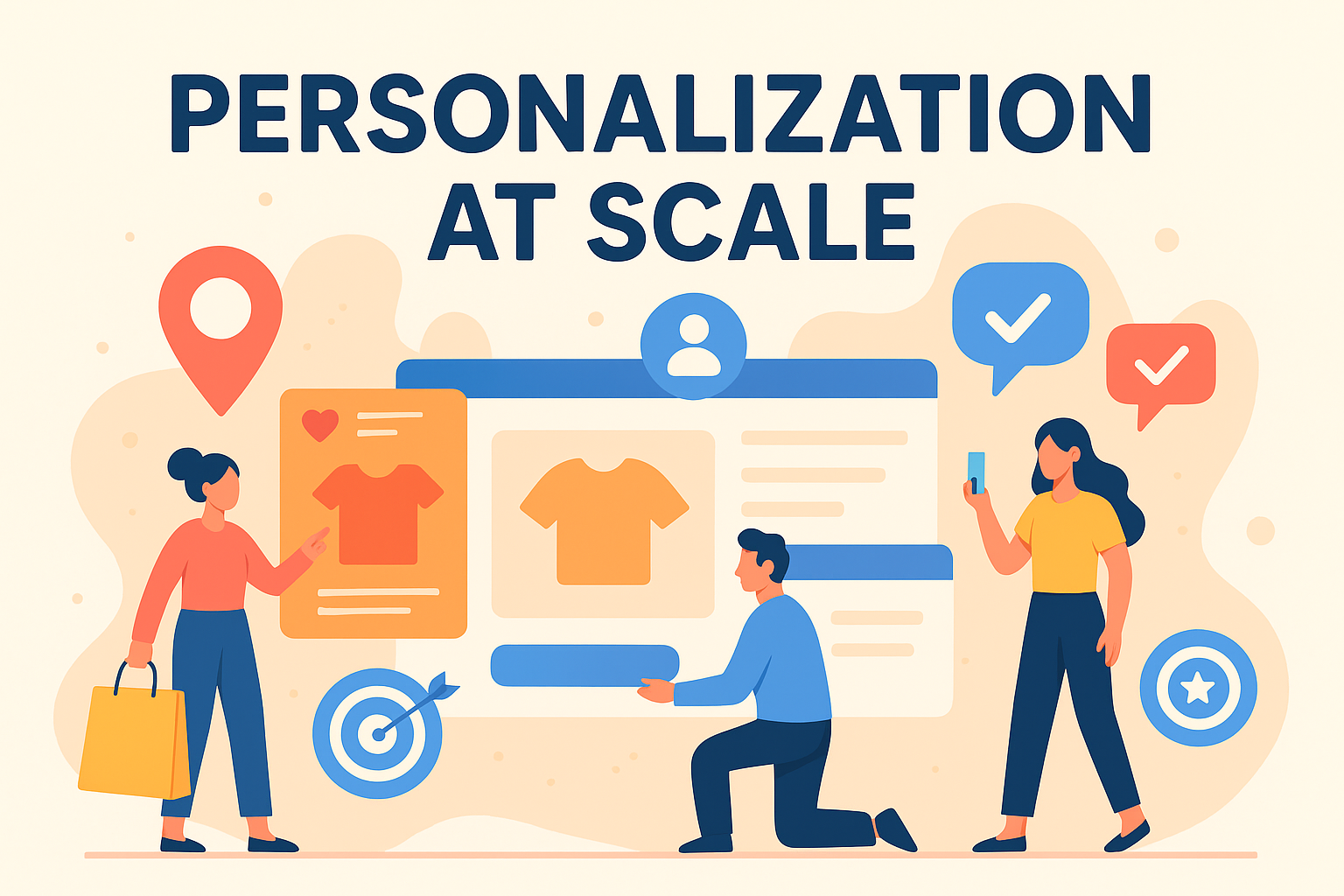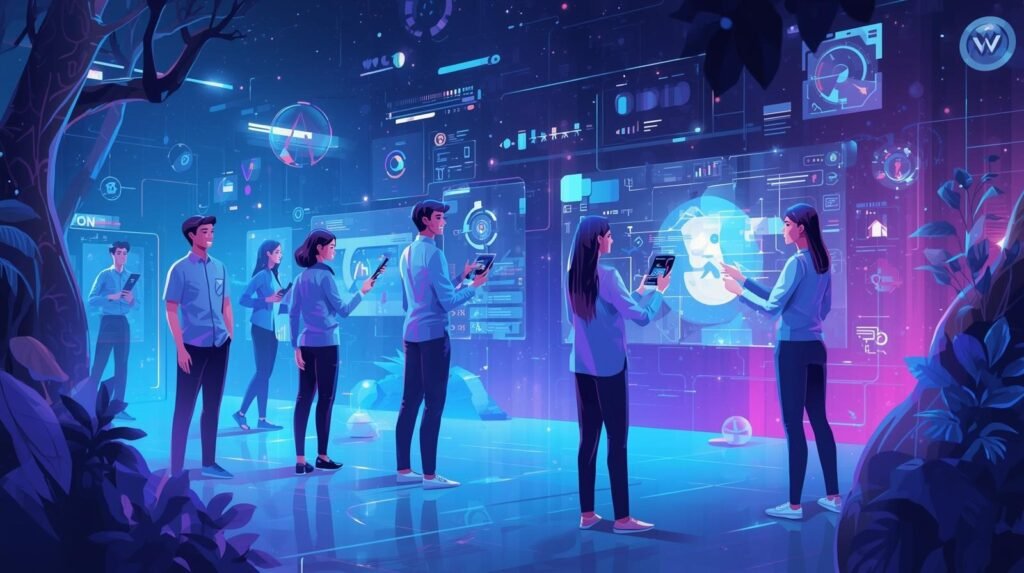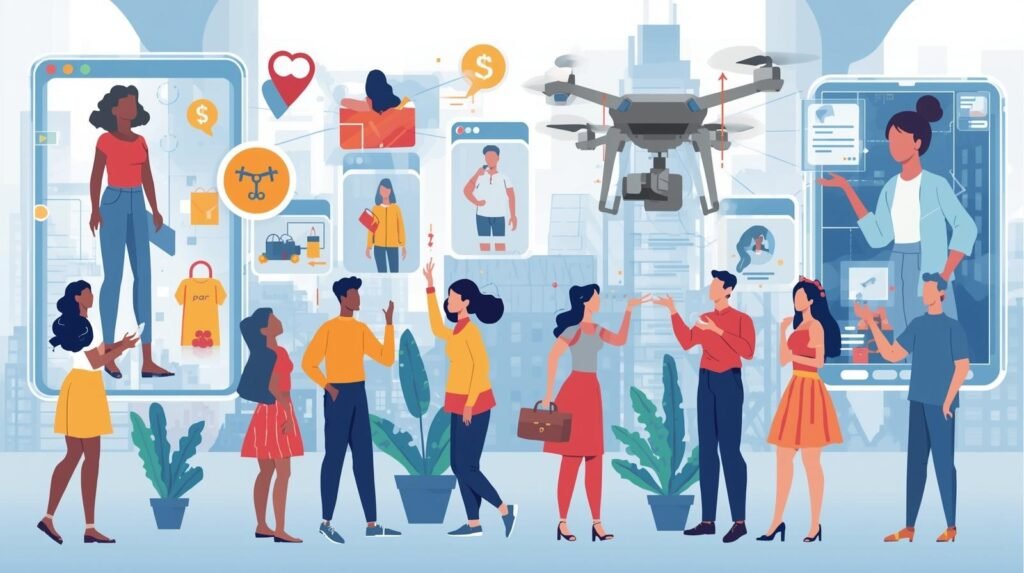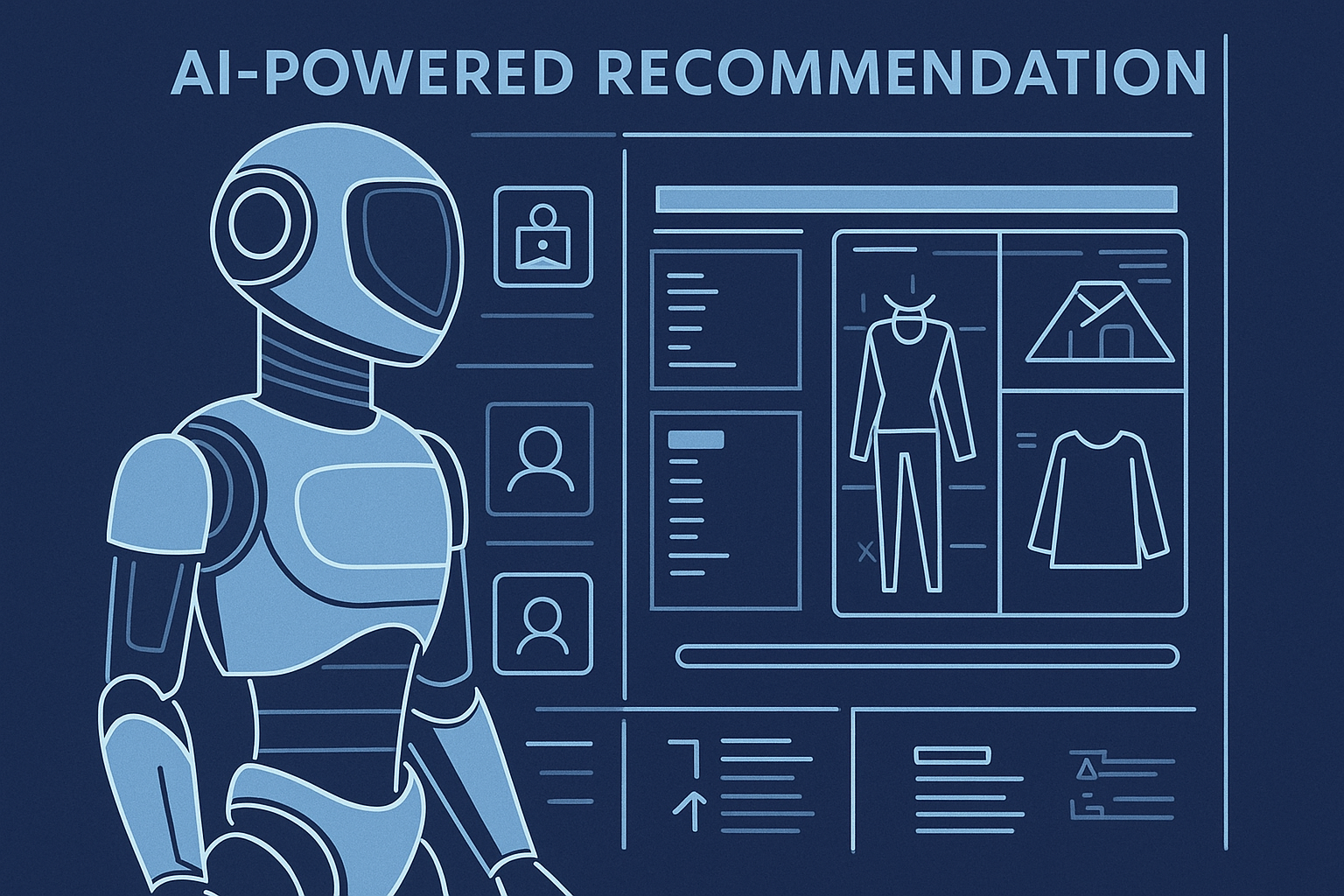
Last week, Maya opened her favorite fashion app. Instead of browsing through hundreds of items, the homepage instantly showed outfits based on her past purchases, current season, and even local weather. She found what she wanted in under two minutes—and happily checked out.
Now, imagine another shopper, Paul. He visits a competitor’s site that looks the same for everyone. No personalized suggestions, no relevant offers—just a static catalog. Within minutes, he leaves without buying.
This contrast highlights the challenge many businesses face: while personalization is powerful, most fail to deliver it at scale.
Generic websites and surface-level tweaks simply can’t meet evolving customer expectations.
That’s where custom development personalization comes in. By building websites and apps that adapt dynamically to user behavior and preferences, brands can achieve true personalization at scale—unlocking higher engagement, stronger loyalty, and measurable growth.
The Limitations of One-Size-Fits-All Websites
Ever landed on a website that feels like it could belong to any brand? That’s the danger of relying on generic templates.
One-size-fits-all websites simply can’t support advanced website personalization strategies—they’re built to be “good enough” for everyone, but not “great” for anyone.
Static content makes users feel unseen, leading to weaker user engagement with personalization and higher bounce rates.
Even worse, these sites often struggle to integrate with customer data, preventing brands from delivering relevant, timely experiences.
That’s why forward-thinking companies are turning to personalized website development—custom solutions that break free from cookie-cutter designs and unlock the power of true personalization.
How Custom Development Improves Personalization

Imagine visiting a site that feels like it was designed just for you—every product, every message, every recommendation tailored to your journey. That’s the power of custom web development personalization.
Unlike rigid templates, personalized website development creates flexibility for businesses to build dynamic user journeys that respond in real time. From first click to checkout, each step can be adapted to what the customer truly wants.
With custom web apps for personalization, brands can:
- Design tailored landing pages for each audience segment
- Deliver AI-driven product recommendations based on browsing and purchase behavior
- Trigger dynamic content personalization—such as offers, banners, or messages—at the exact moment users are ready to engage
This isn’t just a better browsing experience—it’s an engagement-driven web development approach that transforms casual visitors into loyal customers.
Most importantly, these solutions are built to grow. With scalable personalization solutions, businesses can handle increasing traffic, expanding catalogs, and complex customer journeys without losing the human touch.
In short, website customization for businesses ensures personalization doesn’t stop at “small scale” but evolves with growth.
Strategies to Implement Personalization at Scale

So how can businesses actually deliver personalization at scale for websites and apps without overwhelming their teams or tech stack? The answer lies in combining the right strategies with smart execution.
1. Data-Driven Segmentation
Every meaningful journey starts with data. By using CRM insights, analytics, and AI, brands can segment audiences more effectively—unlocking the benefits of website personalization for engagement, such as higher conversions and longer session times.
2. Real-Time Content Adaptation
Static websites are history. With personalization in web design and development, businesses can adjust content in real time based on user behavior—showing the right message, offer, or product at the perfect moment.
3. Personalized Product Recommendations
Customers don’t want endless catalogs; they want relevance. Through custom development for personalized user journeys, brands can deliver tailored product suggestions that boost average order value and reduce drop-offs.
4. Multichannel Personalization
Personalization doesn’t stop at the website. Extending it across web, mobile, apps, and even chatbots ensures consistent experiences. These are proven strategies to personalize websites at scale while meeting users wherever they are.
How to Measure the Impact of Personalization in Websites and Apps

If you can’t measure it, you can’t improve it—and the same holds true for personalization.
To prove impact, businesses must track the right KPIs: click-through rates (CTR), conversions, average order value, and customer retention.
When done right, data-driven personalization in web apps directly improves these metrics. For example, showing product recommendations based on browsing history can lift CTR by over 30%, while dynamic offers triggered by behavior often boost conversion rates significantly.
Engagement goes deeper, too. Personalized experiences make customers feel valued, increasing loyalty and repeat purchases—tangible proof of stronger user engagement with personalization.
The technology powering this isn’t guesswork. With custom APIs for personalization, businesses can connect customer data, analytics, and front-end experiences seamlessly—allowing every click, scroll, and action to inform smarter personalization in real time.
In measurable terms, companies that invest in personalization strategies often see higher retention and as much as a 20–40% increase in revenue growth compared to competitors stuck with generic sites.
Here are a few methods beyond just tracking KPIs:
🔹1. A/B Testing (Split Testing)
- Show one group of users a personalized experience (e.g., product recommendations, dynamic homepage) and another group a generic version.
- Measure changes in CTR, conversions, AOV, or retention.
- Example: Personalized product carousel vs. static “bestsellers” list.
🔹 2. Multivariate Testing
- Instead of just one element, test multiple personalized elements (e.g., banners + product grid + recommendations).
- Helps identify which personalization strategies have the biggest impact in combination.
🔹 3. Cohort Analysis
- Compare the behavior of users who received personalization vs. those who didn’t, over time.
- Great for measuring long-term effects like retention and customer lifetime value (CLV).
🔹 4. Controlled Rollouts (Holdout Groups)
- Keep a small percentage of users in a non-personalized “control group” while the rest experience personalization.
- This shows the incremental lift personalization brings to real-world results.
🔹 5. User Feedback & Heatmaps
- Beyond quantitative data, tools like session recordings, heatmaps, and surveys can show if personalization improves user satisfaction and ease of navigation.
Future of Personalized Website Development

Personalization isn’t just a trend—it’s shaping the future of digital commerce. Businesses that invest in personalized website development today are laying the foundation for staying competitive tomorrow. Here’s what’s driving the next wave:
1. AI-Driven Personalization
Artificial intelligence enables brands to analyze behavior at scale and deliver hyper-relevant recommendations in real time. Think of how Amazon suggests products based on browsing, purchase history, and even items frequently bought together.

2. Predictive Personalization
Predictive models don’t just respond to what users do—they anticipate what they might do. For instance, Netflix predicts shows you’ll want to watch next, increasing binge time and reducing churn.
3. Headless CMS for Personalization
A headless CMS decouples content from the front end, allowing personalized content to flow seamlessly across websites, apps, and devices. This means consistent user experiences, whether customers shop via desktop, mobile, or even voice assistants.
4. API-Driven Personalization
Using custom APIs for personalization, businesses can connect multiple systems—CRM, ERP, marketing platforms—and deliver unified, personalized journeys. For example, Nike’s custom app uses APIs to sync browsing history, workout data, and preferences for tailored product drops.
Real-Life eCommerce Personalization Examples
- Sephora – Uses data-driven personalization in its app, suggesting beauty products based on purchase history and skin profile.
- Spotify (though not eCommerce, great reference) – Delivers personalized playlists, setting a benchmark for recommendation systems.
- ASOS – Applies dynamic content personalization, showing different homepage banners depending on customer location, gender, and season.
- Starbucks – App-driven personalization with custom offers based on buying patterns.
📌 Why It Matters
By embracing AI, predictive analytics, and personalization in web design and development, businesses aren’t just improving engagement today—they’re ensuring they stay ahead of customer expectations tomorrow.
From Generic to Genuine: The Future Is Personal
Today’s customers don’t want generic websites—they expect experiences that feel made for them.
With custom web development services, businesses can deliver journeys that truly connect.
The future belongs to brands that move from one-size-fits-all to meaningful, personalized touchpoints.
👉 Start building your personalized website development strategy today and stay ahead.

